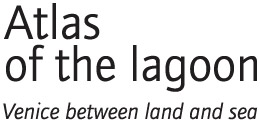
|
|
Macroalgae:
algae of macroscopic dimensions. Macronutrient: see nutrient and Plate 21. Marigraphic zero: benchmark used for measuring sea level in a given locality. In Venice the marigraphic zero is the “Livello medio mare 1897”, the Mean Sea Level of 1897, officially adopted by the Italian state in that year as a reference for measuring altitude. Currently the Mean Sea Level at Punta della Salute is about 23 cm higher than that of 1897, because of the combined effects of subsidence and eustatism. Marsh: in the lagoon of Venice, “marshes” are pools of salt or brackish water, fairly shallow, generally circular in shape and usually surrounded by saltmarshes. They are more common on the landward side of the Lagoon. Metabolism: the sum total of all the chemical and physical processes that take place in an organism; by extension, the chemical and physical changes affecting a given substance inside an organism. It includes the assimilation and distribution within the body of chemical compounds, the changes (biotransformations) to which they are subjected and the elimination of compounds or their metabolites. Metabolite: every product, including intermediate ones, resulting from the metabolism of an organism. Meteoric: concerning meteorology, i.e., the scientific study of weather conditions. Microalga: alga of microscopic dimensions. Micropollutants: substances whose concentrations are relatively low, such as aromatic hydrocarbons, heavy metals and dioxins. They may be organic or inorganic. Microthermal species: species that prefers low temperatures. Miocene: geological epoch from between about 23.5 and 5.3 million years ago. Morphogenesis: the creation of new forms. In geology and geomorphology, the formation of terrestrial and marine forms by multiple processes, endogenous and exogenous, including erosion, sedimentation etc. In biology, morphogenetic processes concern the dynamics of the growth and formation of organisms. Mud: in sedimentology, fine sediment or sedimentary rock composed of clay and silt, i.e., material with grains smaller than 0.063 µm. Cf. Plate 9. Mudflat (Velma): portion of the Lagoon bed that remains submerged under normal tidal conditions and emerges only at the very low tides which occur during syzygy (see spring tide). The velma environment provides a habitat for euryecious species, resistant to the considerable environmental variations (in salinity, dissolved oxygen and temperature) caused by periodic emersion. The typical plant association of these environments is Zosteretum noltii, with the possible presence of algae of the family ulvaceae, especially the genus Enteromorpha. Cf. Plates 56-63. Murazzi: the series of seawalls built parallel to the coast to protect the Lagoon of Venice from erosion by the sea. Defensive works built of Istrian stone by Bernardino Zendrini from 1739 onwards, by order of the Venetian Republic, off the beaches of Malamocco, Pellestrina and Sottomarina. Natura 2000: the name given by the Council of Ministers of the European Union to a coordinated and coherent system (a “network”) of areas designed to promote the conservation of biological diversity in the territory of the EU. Specifically, it deals with the protection of a series of habitats and animal and plant species indicated in Annexes 1 and 2 of the Habitats Directive (Directive 43/92/EC). Sito della Commissione europea Neap tide: tide that is generated when the sun and moon are in quadrature (the first and last quarters of the lunar cycle). At these times, the line from the Earth to the Moon is at right angles to the line from the Earth to the Sun; the tide-producing forces of the Sun and the Moon thus partially cancel each other out, and tidal ranges are at a minimum. Nekton: the complex of aquatic organisms with their own system of propulsion, even against the current. Neogene: periodo geologico (comprendente Miocene e Pliocene) che si estende tra circa 23,5 e 1,75 milioni di anni fa. Niche, ecological niche: In ecology, a niche is a term describing the relational position of a species or population in an ecosystem. The niche includes how a population responds to the abundance of its resources and enemies (e.g., by growing when resources are abundant and predators are scarce). The abiotic or physical environment is part of the niche because it influences how populations affect, and are affected by, resources and enemies. Nitrophile: of plants that prefer terrain rich in nitrogen compounds or in nutrients generally. Nutrient: any substance that promotes the development of living organisms. The term is generally applied to carbon, nitrogen, phosphorus, potassium, calcium, magnesium and sulphur, otherwise known as macronutrients. The main micronutrients are boron, zinc, iron, molybdenum, chlorine, manganese and copper. |